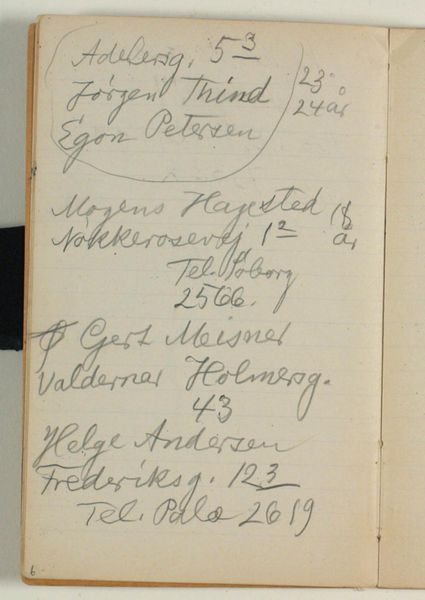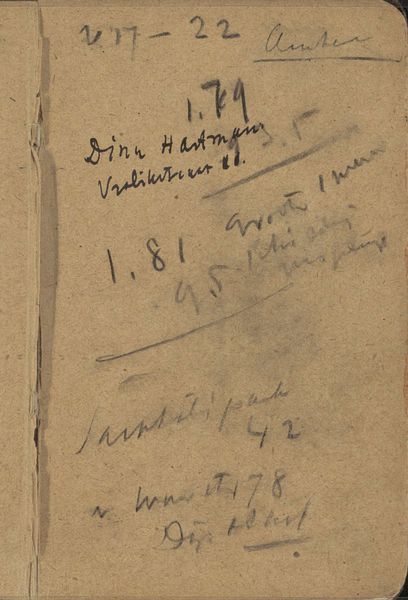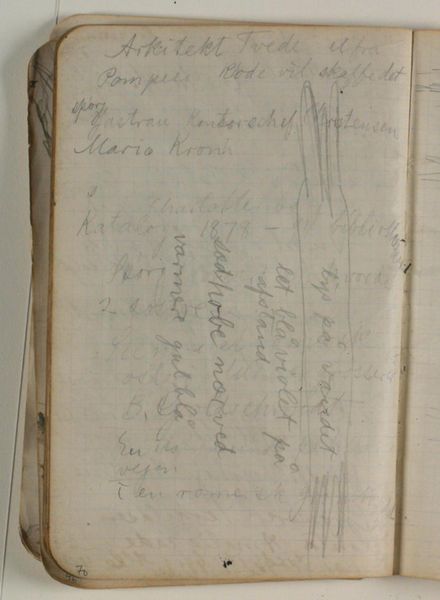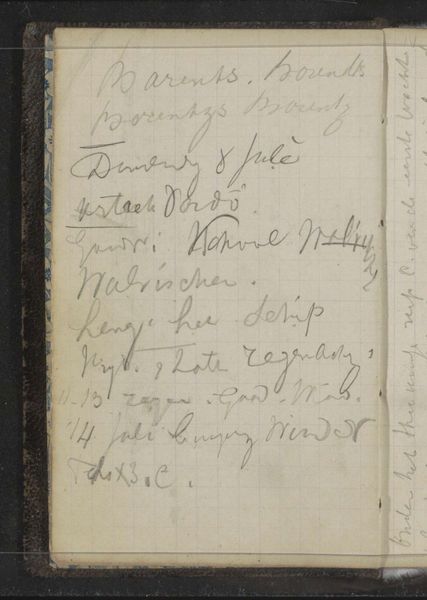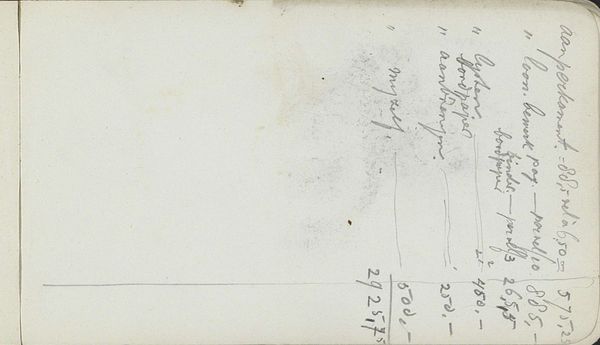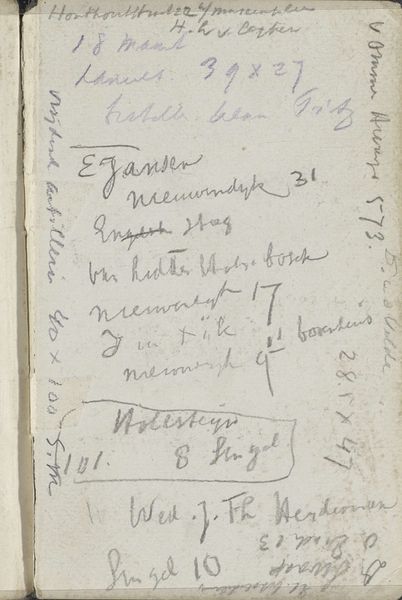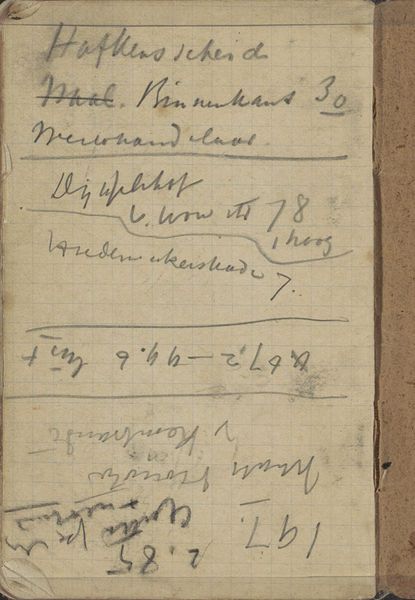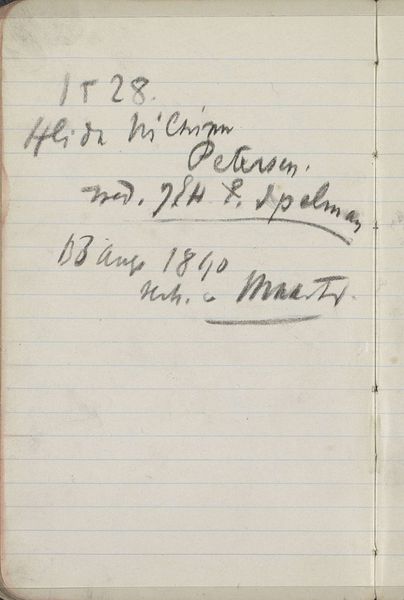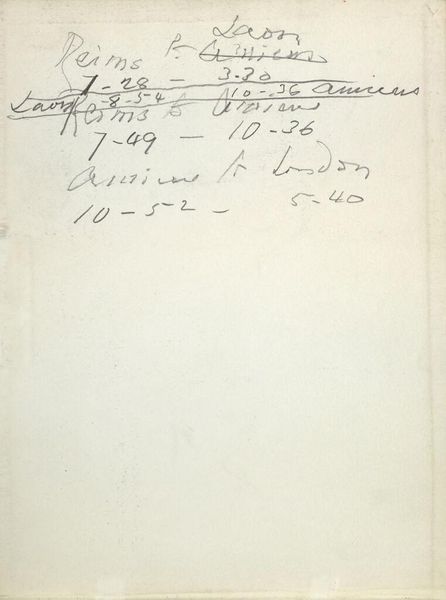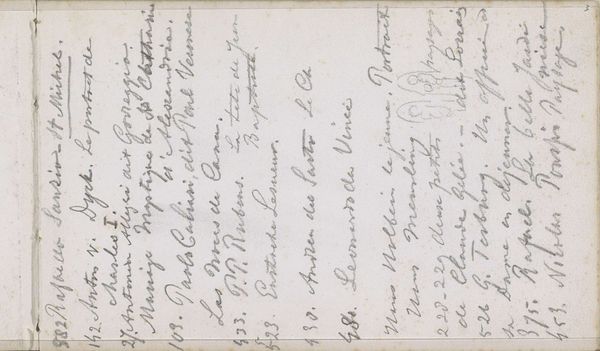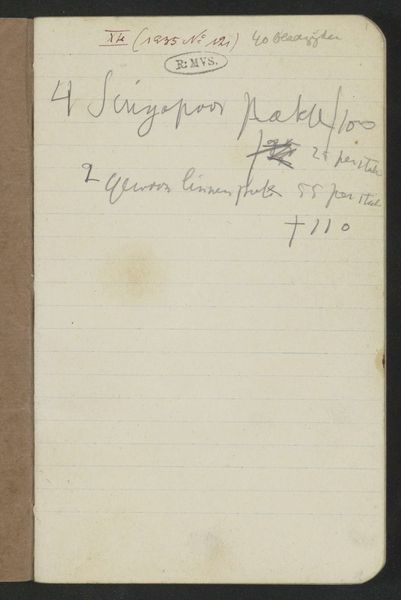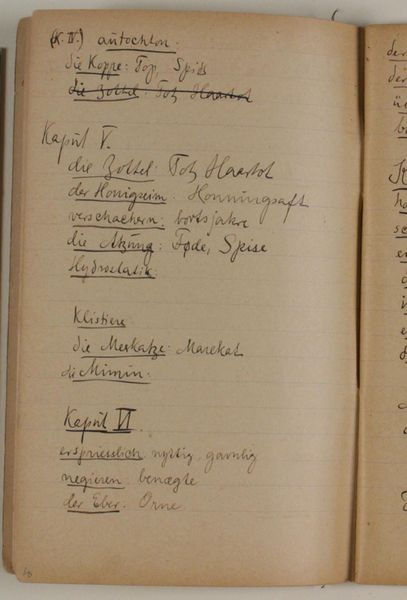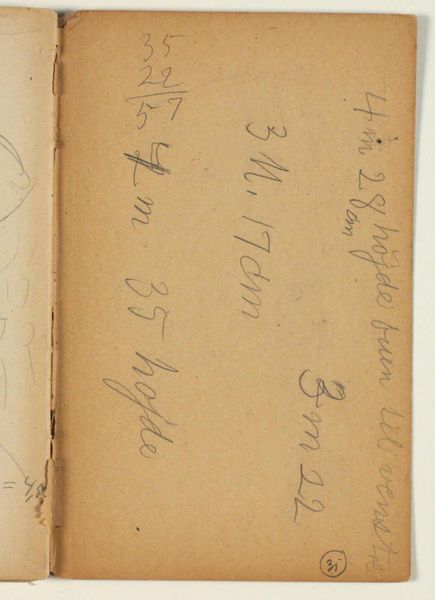
drawing, paper, ink, pencil
#
drawing
#
paper
#
ink
#
pencil
Dimensions: 178 mm (height) x 111 mm (width) x 5 mm (depth) (monteringsmaal), 178 mm (height) x 111 mm (width) (bladmaal)
Editor: This is "Adresser," created between 1937 and 1938 by Niels Larsen Stevns. It's a drawing in ink and pencil on paper. It appears to be a page from a notebook or address book, with handwriting in the upper right quadrant. It's simple, almost mundane. How should we interpret a work like this? Curator: Think of this work, not as simply a list, but as a fragmented narrative reflecting the artist's lived experience. Stevns created this work in a tumultuous historical period; pre-war Europe was wrestling with questions of nationalism, identity, and power. The presence of addresses is poignant; who are these people, and how are they connected? Editor: That makes sense. So, you're saying that even something seemingly ordinary can be read as a social or political document of its time? Curator: Precisely. Consider also that address books were highly personal items, mapping one's social networks, particularly for those navigating unstable geopolitical terrain. Who did this artist maintain contact with? How might we uncover why this specific page was preserved as art? Also, do you notice that in the text one can see written "Pale 700gX?" Editor: Yes, it almost appears that the drawing has a practical usage and is part of a longer address list. What kind of implications does it bring knowing this about the artist? Curator: I suggest that Stevns may be making notes within an economic, political, and artistic nexus that demands from us as interpreters to recognize his broader commentary on belonging, exile, and survival in a society constantly reshaping itself. This reading connects the work to themes of human experience within specific historical and social contexts. Editor: It's amazing how seeing the context transforms what I initially thought was just a page from a notebook into something far more complex and relevant. Thanks! Curator: Indeed! Now, how does understanding this context shape your perspective on the work’s aesthetic and conceptual value?
Comments
No comments
Be the first to comment and join the conversation on the ultimate creative platform.
